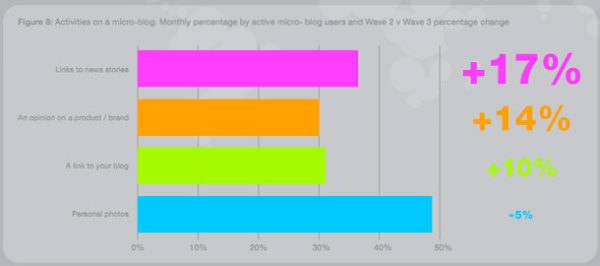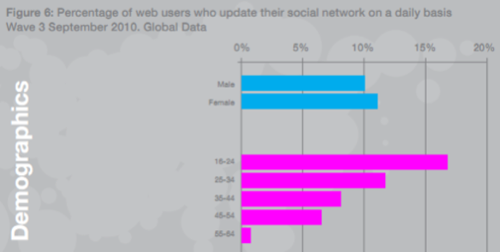A new report from GlobalWebIndex has some thought-provoking data about “social entertainment,” a term for when entertainment is augmented by social media technologies. For example, the real-time discussion happening around TV shows on Twitter. In the GlobalWebindex report, entitled GlobalWebIndex Wave 1-3 2010, author Tom Smith notes three main trends. The first two are well known: the rise of ‘real-time’ in consumer entertainment and the growth of what he terms “packaged platforms.” By the latter, he means services that live outside of the browser – smartphone and tablet apps, gaming consoles, eReaders and Internet-connected TV sets.

The third trend is more contentious. The report states that in the new era of social entertainment, traditional media holds the power – a change from the ‘web 2.0’ era, when the user ruled. The report argues that this will lead to a return to passive experiences by consumers.

“Professionals are back in the driving seat when it comes to content,” states the report. This, it says, will lead to the Internet eventually becoming the primary mass entertainment and content delivery platform.
While that is undoubtedly true, it’s difficult to see how the author comes to this conclusion:
“We as consumers are going
back to traditional needs and demands and seeking a more passive experience.”
The report explains that social entertainment is far more about content sharing, than creation. It goes on to suggest that this “light nature of interaction” is moving the consumer back to the passive state they were in before the Internet came along. Further, that services like Facebook and Twitter turn consumers into “distributors.”

I agree that traditional media is now finding a foothold on the Web, thanks to the rise of “packaged platforms” and social media sharing services like Twitter.
I’d suggest though that this is still far from being the passive media consumer of old. These days, consumers are interacting with ‘professional’ content through their PCs, smartphones or tablets. They’re talking with peers and other people who are watching the same TV shows, in real-time. Or they’re watching a live music concert and talking with people on Facebook. Or they’re arguing in the comments of a news blog.
They are analyzing content too, actively engaging in discussions about it. Even with books, a traditionally one-way consumption experience, readers nowadays can make notes about the book they’re reading and share that – via an eReader like Kindle or a service like Goodreads.
While all of this is not as creative as recording a video or writing a blog, it’s not passive. Consumers are actively engaging with content.
So who is causing this shift back to so-called passive entertainment? It’s the younger generation! The report states that “almost 17% of
16-24s are updating their social network on a daily basis,” which is driving the “real-rime revolution.”

One other contentious finding of the report that is worth mentioning. It states that the browser – and the Open Web in general – will fade away and that eventually “packaged platforms” will rule. This is the same argument that Wired infamously brought forward last year in its The Web is Dead issue.
“If we think about the internet in 10 years,” states the report, “it is clear that the browser will seem
antiquated.” Elsewhere, the report states that connecting to the Internet in the future “may look more like
switching on your TV.”
The jury is out on whether the browser-based Web will be usurped by apps and other closed platforms.
To me the far more interesting question that the report asks is: are we, as Internet consumers, becoming more passive? I’ve stated my response, that it’s not passivity but active and two-way engagement with content. What do you think?










